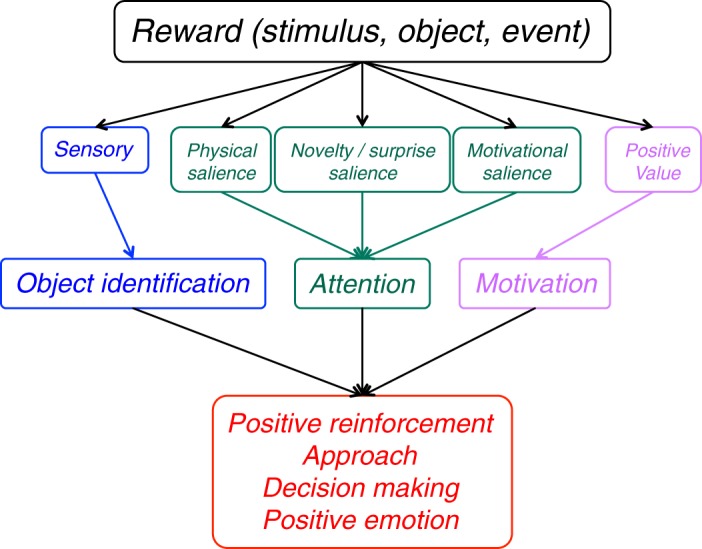FIGURE 1.

Reward components and their functions. The sensory component reflects the impact of environmental stimuli, objects, and events on the organism (blue). Pleasurable activities and situations belong also in this sensory component. The three salience components elicting attentional responses (green) derive from the physical impact (left), novelty (middle), and commonly from reward and punishment (right). The specific positively motivating function of rewards derives from the value component (pink). Value does not primarily reflect physical parameters but the brain's subjective assessment of the usefulness of rewards for survival and reproduction. These reward components are either external (sensory, physical salience) or internal (generated by the brain; value, novelty/surprise salience, motivational salience). All five components together ensure adequate reward function.
